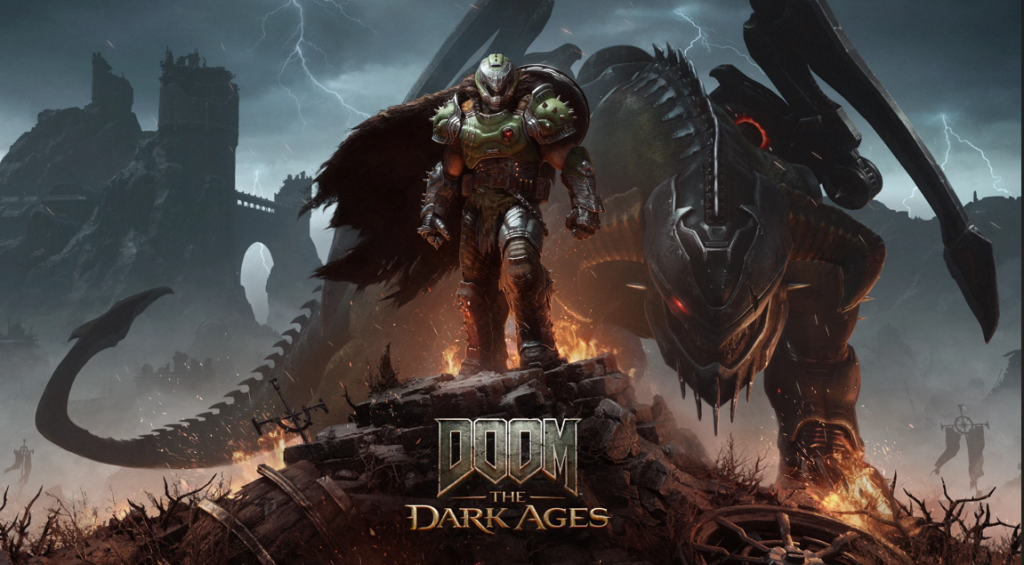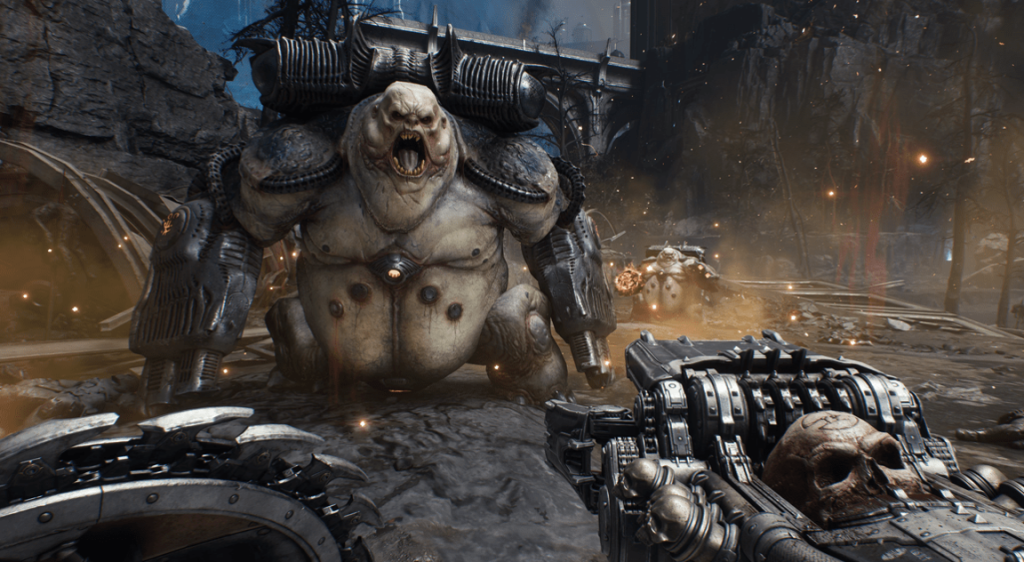DOOM: The Dark Ages emerges as a bold and ambitious prequel to the modern DOOM saga, poised to unearth the ferocious origin story of the iconic DOOM Slayer. As the third installment in the critically acclaimed rebooted franchise, this title thrusts players into a brutal, medieval-inspired war against the legions of Hell, masterfully blending dark fantasy with signature sci-fi brutality.
The game is scheduled for full release on May 15, 2025, with Premium Edition owners gaining early access from May 13, 2025. It will be available on PC (via Steam, Battle.net, and the Microsoft Store), PlayStation 5 (with enhancements for PlayStation 5 Pro), and Xbox Series X|S. Furthermore, DOOM: The Dark Ages will be available on Xbox Game Pass from day one of its full launch.

Setting, Story, and Atmosphere
The narrative in DOOM: The Dark Ages is the most developed the series has seen, moving beyond the lone wolf antics of previous entries. Players are thrust into a world where the Slayer is not just a solitary force but a weapon wielded by gods and kings in a desperate war against the demonic legions. Human companions and central figures like King Novik and Prince Ahzrak add depth and intrigue, making the campaign feel like a true epic rather than a mere backdrop for carnage.
This installment’s story is cinematic and action packed, focusing on the Slayer’s transformation from a pawn of the mysterious Maykrs to a legend who turns the tide of war. The inclusion of more cutscenes and character-driven moments, while a departure from DOOM’s traditionally sparse storytelling, brings a new dimension to the franchise. The world-building is enhanced by the medieval setting, with ruined castles, ancient hellscapes, and vast battlefields providing a rich tapestry for the game’s relentless violence.
Combat and Gameplay Mechanics
DOOM: The Dark Ages retains the franchise’s signature fast paced, visceral combat but introduces several significant changes. The most notable addition is the Slayer’s Shield, which fundamentally alters the flow of battle. Instead of relying solely on mobility and constant movement, players are now encouraged to charge into danger, using the shield to block or parry attacks. The parry system is generous and customizable, allowing players to reflect projectiles and stun enemies with well-timed guards. This new mechanic brings a sense of weight and power to the Slayer, making every encounter feel impactful.
The arsenal is as brutal as ever, with classics like the Super Shotgun returning alongside new bone crushing weapons such as the Shield Saw. The Shield Saw, in particular, adds tactical depth, letting players slice through enemies and environmental obstacles alike. The enhanced glory kill system makes finishing moves even more satisfying, rewarding aggression and precision in equal measure. While the pace is slightly less frenetic than DOOM Eternal, the grounded, heavy combat style offers a fresh take that many fans will appreciate.
Visuals, Audio, and Technical Achievements
Powered by the new id Tech 8 engine, DOOM: The Dark Ages is a technical marvel. The game leverages the Vulkan graphics API exclusively, delivering stunning visuals, improved performance, and advanced physics for a seamless and immersive experience. High polygon counts and a sophisticated level-of-detail system ensure that textures remain crisp and detailed, even up close. The environments are richly crafted, with a believable medieval aesthetic that varies from claustrophobic interiors to sprawling outdoor arenas and even airborne battles.
Lighting and shadows are expertly implemented, using a mix of baked and ray-traced elements to balance visual fidelity and performance. The sheer amount of action on screen-dozens of enemies, projectiles, and environmental effects-never overwhelms the hardware, a testament to the engine’s optimization. Character animations in cutscenes are solid, though not quite at the pinnacle of current-gen standards, but more than adequate for the game’s tone and style.
The soundtrack, while intense and fitting, has drawn mixed reactions due to the absence of composer Mick Gordon, whose work defined the previous two entries. The current score serves its purpose, fueling the chaos, but lacks the memorable hooks that fans might expect. Nevertheless, the audio design as a whole, from weapon effects to demonic roars, remains top notch.

Level Design and Exploration
The Dark Ages features the largest and most expansive levels in the franchise’s history. Each area is meticulously detailed, with secrets, challenges, and rewards hidden throughout. The variety in map design keeps the gameplay fresh, shifting from ruined fortresses and ancestral forges to the grotesque innards of colossal demons. The inclusion of new traversal mechanics, such as riding a cybernetic Mecha Dragon or piloting the massive Atlan mech, injects moments of spectacle and variety into the campaign.
Players will find that the world is not only vast but alive with activity. Environmental storytelling, dynamic lighting, and a constant sense of menace permeate every location. The design team has succeeded in making each area feel distinct, ensuring that the journey through Hell’s realms never becomes monotonous.
Customization, Accessibility, and Performance
DOOM: The Dark Ages offers a wealth of customization options. Difficulty modifiers, accessibility settings, and a robust suite of graphical adjustments allow players to tailor the experience to their preferences and hardware capabilities. The game requires at least 100GB of storage on PC, reflecting the scale and detail of its assets.
.Performance was consistently strong on all platforms I tested, including both Xbox and PC., thanks to the id Tech 8 engine’s optimization. Players can expect smooth framerates and minimal loading times, even during the most chaotic battles. The Premium Edition adds value for dedicated fans, including a digital artbook, soundtrack, exclusive skins, and access to future campaign DLC.
Criticisms and Drawbacks
Despite its many strengths, DOOM: The Dark Ages is not without flaws. Some players may find the later stages repetitive, as the introduction of new enemy types and weapons tapers off. The story, while more substantial than before, still falls short of the depth found in narrative-driven RPGs. The absence of multiplayer modes is a notable omission, especially for those who enjoyed the competitive aspects of previous games.
Weapon switching can feel sluggish, potentially discouraging experimentation during combat. The soundtrack, though serviceable, lacks the distinctiveness of earlier entries due to the change in composer. Additionally, the game’s ending is drawn out, with multiple final boss encounters that may test players’ patience. These issues, while present, do little to overshadow the overall quality and ambition of the title.

Conclusion
DOOM: The Dark Ages stands as a worthy and innovative addition to one of gaming’s most storied franchises. By blending a dark medieval setting with cutting-edge technology and refined mechanics, id Software has delivered an experience that feels both fresh and faithful to DOOM’s legacy. The game’s cinematic story, robust combat, and technical excellence ensure that it will satisfy longtime fans and attract new players alike. While it is not without its shortcomings, particularly in terms of repetition and the absence of multiplayer, the sheer spectacle and craftsmanship on display make it a must-play for anyone craving intense, single-player action. As the Slayer’s legend is forged in blood and fire, DOOM: The Dark Ages cements itself as a landmark entry in the series, heralding a new era of carnage and myth.